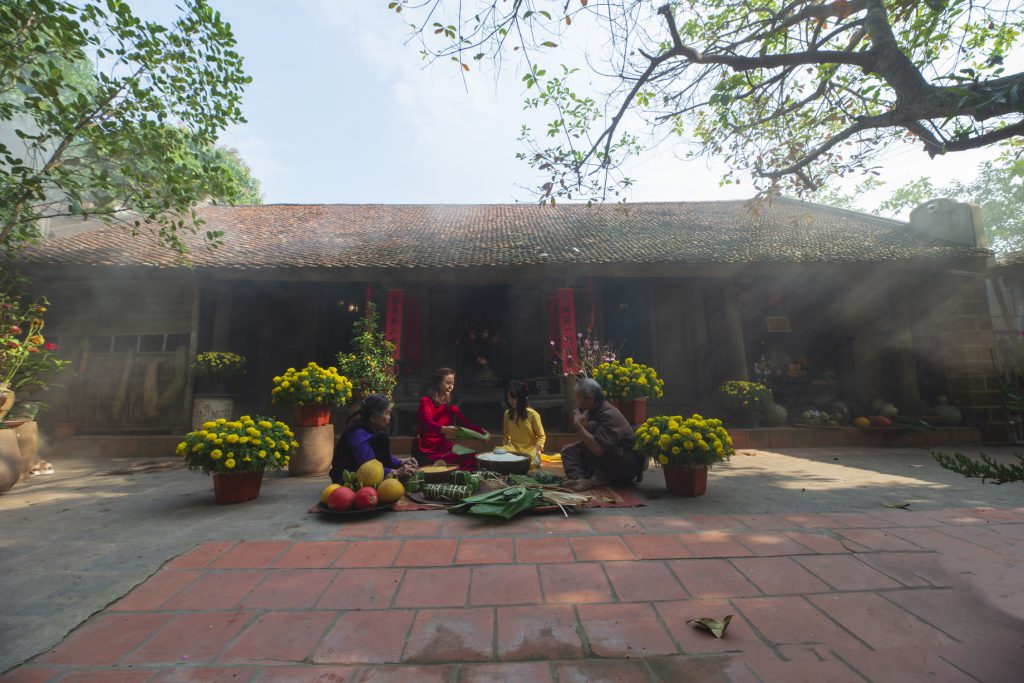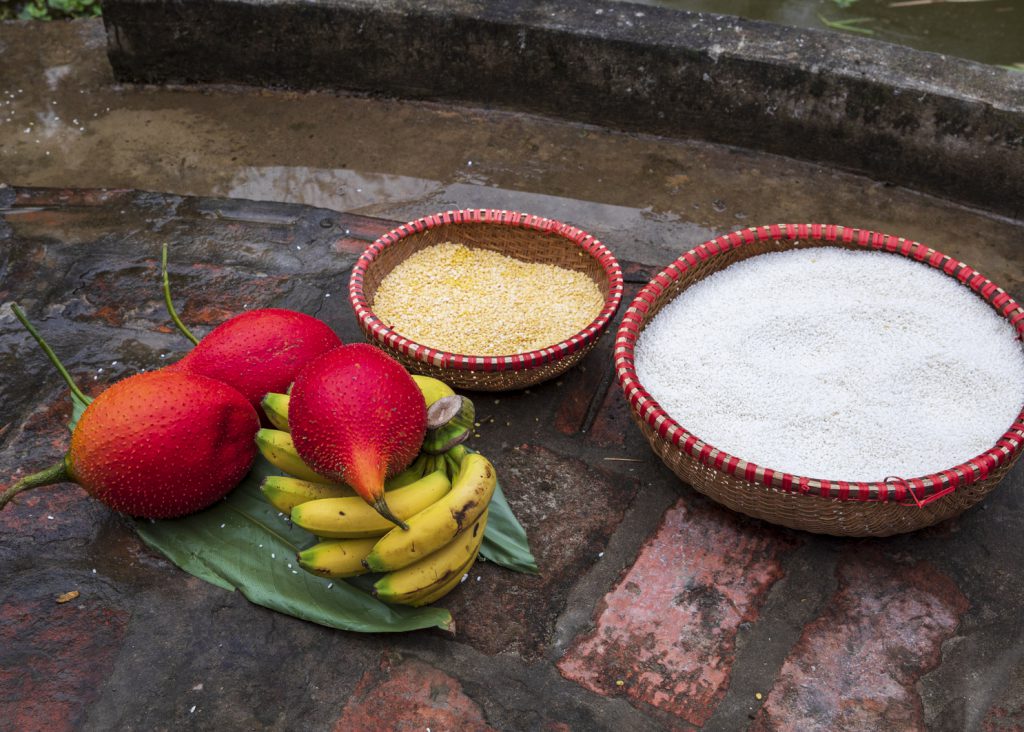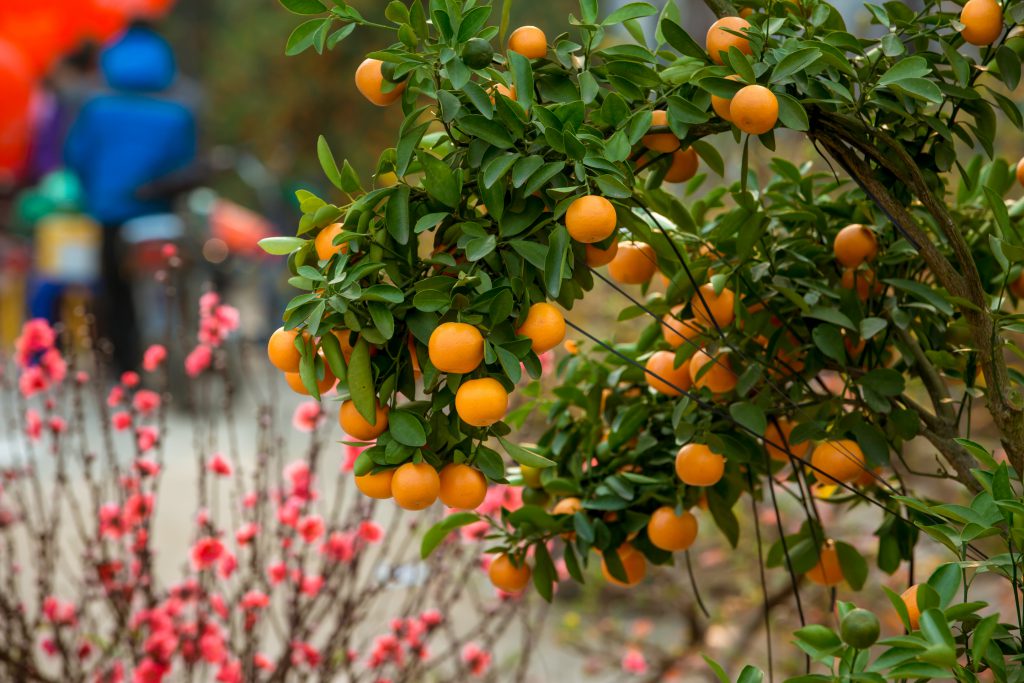Truong Quy
Today’s philosophers often discuss how technology has given humans more leisure time. The same is true for Tet nowadays; it no longer makes people too busy, leaving them ample time to seek joy. As a result, Tet comes early, not waiting for the first peach blossoms to hit the streets or the spring rain to remind us that it’s here. Vietnamese people start to get excited about Tet because preparing for it is part of the fun.

Shopping for Tet is shopping for joy
At the end of both the solar and lunar years, almost everyone becomes busier with year-end work deadlines looming. That is when one can truly feel the footsteps of spring approaching, even though the air retains its winter chill.
In the past, preparing offerings for the altar or cooking a holiday feast had to be planned well in advance due to limited supplies. Nowadays, what requires early attention are the “big-ticket” items, such as home renovations, purchasing new work-saving devices, and buying home entertainment and technology gadgets. Homeowners have always decked out their living rooms with impressive items to show off their progress over the year. Over half a century ago, Dong Ho paintings and Hang Trong paintings of the Four Quarters and Four Seasons brought Tet colors into people’s living rooms, bringing hopes and dreams of nature to life.
Today, modern audio-visual devices might replace those artworks, as they are the new standards of our contemporary lifestyle.

Meanwhile, those who cherish art or yearn for the golden past have another, albeit more expensive, way to decorate: collecting antiques and artwork. As Tet approaches, visitors flock to buy antiques. In Hanoi, the Hang Luoc Flower Market has several rows selling peach branches, kumquats, and Tet flowers, but many more stalls offering antiques and vintage items. It seems that here, time stands still. The artifacts of bygone eras captivate those who admire traditional lines. Here you can find a bronze ritual set, a vase with the pattern of the Four Seasons, and much more to resonate with the spirit of the Tet season. Some items seem straight out of stories like Vang bong mot thoi (Echoes of a Former Time) or the essay Chiec lu dong mat cua (The Crab-Eyed Copper Censor) by Nguyen Tuan, from a time when people were very nostalgic for the past, thus preserving the soul and essence of an “old-style” Tet.
Although Hanoi has many streets like Nguyen Thai Hoc and Hang Gai that sell decorative paintings all year round, thanks to rising demand, buying a beautiful painting for Tet is easier than ever. Buyers can take long-lasting joy in their valuable artworks. Some homeowners seek to acquire masterpieces by renowned Vietnamese and international artists. Of course, these famous works are costly, so art lovers save up all year. For art collectors, securing a worthy piece of art to hang in one’s home feels like meeting a goal for a beautiful Tet.

Each person is an artist decorating for Tet
Besides household items and utensils, items bought for Tet include fruit, sweets, and foodstuffs. Securing fresh, delicious, and visually appealing goods is like a “marathon” for homemakers. Tet shopping isn’t just about size and freshness; it also requires thoughtful planning and decorating skills. Arranging a beautiful vase of flowers or creating a balanced fruit tray is not an easy task, especially for perfectionists. Even more attention goes to the Tet feast table, which showcases Vietnamese culinary aesthetics. To create perfect offering platters to honor their ancestors and get ready for New Year celebrations, Vietnamese people usually start preparing weeks before Tet, even though many items and dishes are now pre-processed or even pre-cooked to order. A sincere reverence mixed with a love of cooking and decorating makes these intricate and complex tasks much more manageable. Even the tradition of making Chung cake, which involves many time-consuming steps, brings joy to families and groups of friends, eager to immerse themselves in traditional culture.
As each person prepares for Tet, they express their artistic spirit. This has been true since the time when each family adorned their homes with simple Dong Ho folk paintings that symbolized wealth, luck, and prosperity, or with vases of modest flowers like daisies and violets. On the altar, there would be a tray of common fruit, such as bunches of green bananas, golden pomelos, and clusters of orange-red kumquats, accompanied by a plate of fresh betel and areca nuts, a simple box of sweets amidst the light scent of incense and the sweet and gentle aroma of traditional herbal bath-leaves, used for end-of-year bathing, emanating from the kitchen. There wasn’t much, nor was it very luxurious. Yet the simplicity of the old times still has its charm today, as the trend to revive traditional Tet customs makes these old-fashioned items sought after. Many people are even eager to prepare Chung cakes, eagerly gathering with family and friends.

These traditions have not changed in the consciousness of Vietnamese people, at least not around Hanoi. These simple items are prized for evoking strong feelings and a sense of harmony, rather than extravagant displays. It seems that the more people face changes in technology and convenience, the more they grow aware of the diverse rhythms of life, and Tet preparations represent a necessary slowdown. The hustle and bustle of the year-end days leading up to Tet remain moments for people to be inspired and happily productive. Tet is no longer just about the three days of celebration. It is a process that allows everyone to become an enthusiastic creator. Ultimately, preparing for Tet has become a festival in itself.










